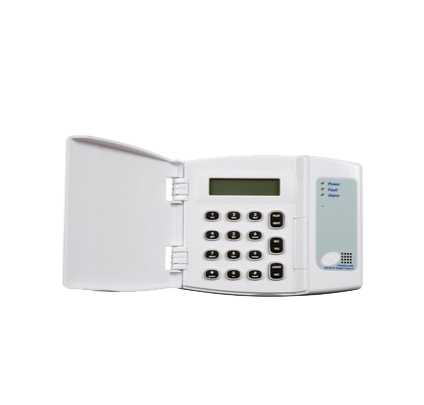Intruder alarm systems fall into three general categories:
- Pre-wired system
- Wireless system
- Hybrid System (A combination of both wired and wireless)
Provided your premises is already prewired for an alarm, wired alarm systems tend to be less expensive than wireless systems. However, this may not hold true if your premises requires wiring for an alarm. Most new properties will be already set up with the appropriate wiring in place for an intruder alarm. Most wireless systems operate using batteries which need to be changed every 3-4 years and transmit signals via a radio frequency.
Generally speaking, if your property is pre-wired for an alarm then it is best to opt for a wired system.Within each category of alarm (wired or wireless) there are two further types of system:
- Audible-only system
- Remotely monitored system
An audible-only alarm operates by sounding a siren or bell when the alarm is activated, and relies on the noise the alarm makes to deter burglars and alert owners to the fact that a robbery is being attempted. Remotely monitored systems can be audible or silent, but are connected to the outside world via a phone line. This is predominantly achieved through a GSM unit (using a GPRS mobile network) or landline. They send a signal to an alarm receiving centre (ARC) which informs you or a nominated keyholder(s) and/or the Gardaí (once verified – activation of at least two devices) that the alarm has been activated.
A standard alarm consists of components that either provides;
- Perimeter protection
- Trap protection (motion detection)
- A combination of both (this would be the most typical installation).)
Perimeter protection consists of various detection devices including vibration/inertia sensors and magnetic reed contacts protecting external doors and windows around the premises. The intruder alarm is activated as an attempt to make entry into the premises is occurring. Passive Infra-Red detectors, often referred to as beams or motion sensors, utilises a dual pyro (electric element within sensor) to detect changes in the infra-red energy levels in the form of heat and motion within the protected space i.e. room, hallway or corridor. A premises protected by PIRs only will detect an intrusion only when entry has already been achieved into the premises, so careful consideration is needed. Most alarm systems are made up of a combination of both perimeter and motion detection protection in order to provide full protection to the premises. Early detection can often deter an intrusion to the premises obtained through perimeter protection, whilst motion detection will ensure the premises is protected if entry is made into the premises by alternative methods to either the windows or doors i.e. roof entry. There is no ‘one size fits all’ strategy when it comes to choosing an intruder alarm, as much depends on your own individual circumstances. For example, if you are living in an isolated area with few neighbours, then a remotely monitored system may be more appropriate. If you are living in an urban area, or an apartment block, then an audible-only system may be sufficient. If you are availing of discounted home or company insurance on the basis of your alarm, then this may be a determining factor in the level of protection and system that is required. It’s also worthwhile asking your local Crime Prevention Officer for advice. Garda Crime Prevention Officers are stationed around the country to offer guidance and reassurance to members of the community.
















